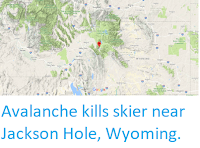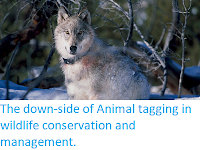The Steamboat Geyser in the Yellowstone National Park, Wyoming, erupted on Friday 27 April 2018, the third such eruption this year, following events on 19 April and 15 March. This is the first time the geyser has erupted since September 2014, and the first time it has erupted three times within a year since 2003. This has led to some speculation that these events may indicate a forthcoming eruption on the Yellowstone Supervolcano (a popular idea with some elements of the media), but no such inference can be made, with scientists at the Yellowstone Volcano Observatory pointing out that these eruptions have been considerably smaller than the largest known events at the Geyser, which cab produce water spouts reaching over 90 m in the air and lasting for up to 40 minutes.
Eruption on the Steamboat Geyser on 27 April 2018. Yellowstone National Park/Twitter.
The Yellowstone National Park lies on top of the caldera of an active volcano. The geysers and hot springs are fuelled by water from the surface peculating through the ground until it encounters hot rocks or magma, which heats it rapidly. This hot water then rises back to the surface to fuel the geysers and fill the volcanic pools of the park. As it passes through the rocks the water absorbs chemicals from the surrounding minerals, with water with different mineral properties in different parts of the park, creating a variety of brightly coloured pools.
Yellowstone is home to one of the world’s largest active
volcanic systems. Cataclysmic eruptions in the past few million years
created huge volcanic depressions called “calderas.” The youngest, the
Yellowstone Caldera, was formed 640 000 years ago. Since then, about 80
eruptions of rhyolite (thick, sticky lava) and basalt (more-fluid lava)
have occurred. The caldera’s interior is largely covered by rhyolites,
most erupted in the past 160 000 years. Large hydrothermal
(steam)-explosion craters formed in the past 14 000 years are located
near Yellowstone Lake and in major geyser basins. Recent earthquakes
(1973 to 2002) were concentrated between Hebgen Lake and the Norris Geyser Basin and along faults. USGS.
The Steamboat Geyser is the world's second largest, after the Waimangu Geyser in New Zealand, which erupts even less frequently (it last erupted in 1908), and even small eruptions like those seen this year are much larger than those seen on the nearby Old Faithful Geyser, which erupts sever times a day with water reaching 30-40 m above the ground. The size of a water spout related to how much water pressure (caused by water expanding as it is heated and some of it turns to vapour) builds up before there is a release. Therefore the more frequent, smaller, eruptions seen this year are a symptom of water escaping at a lower pressure, rather than a symptom of increasing volcanic activity within the caldera.
See also...
Follow Sciency Thoughts on Facebook.








